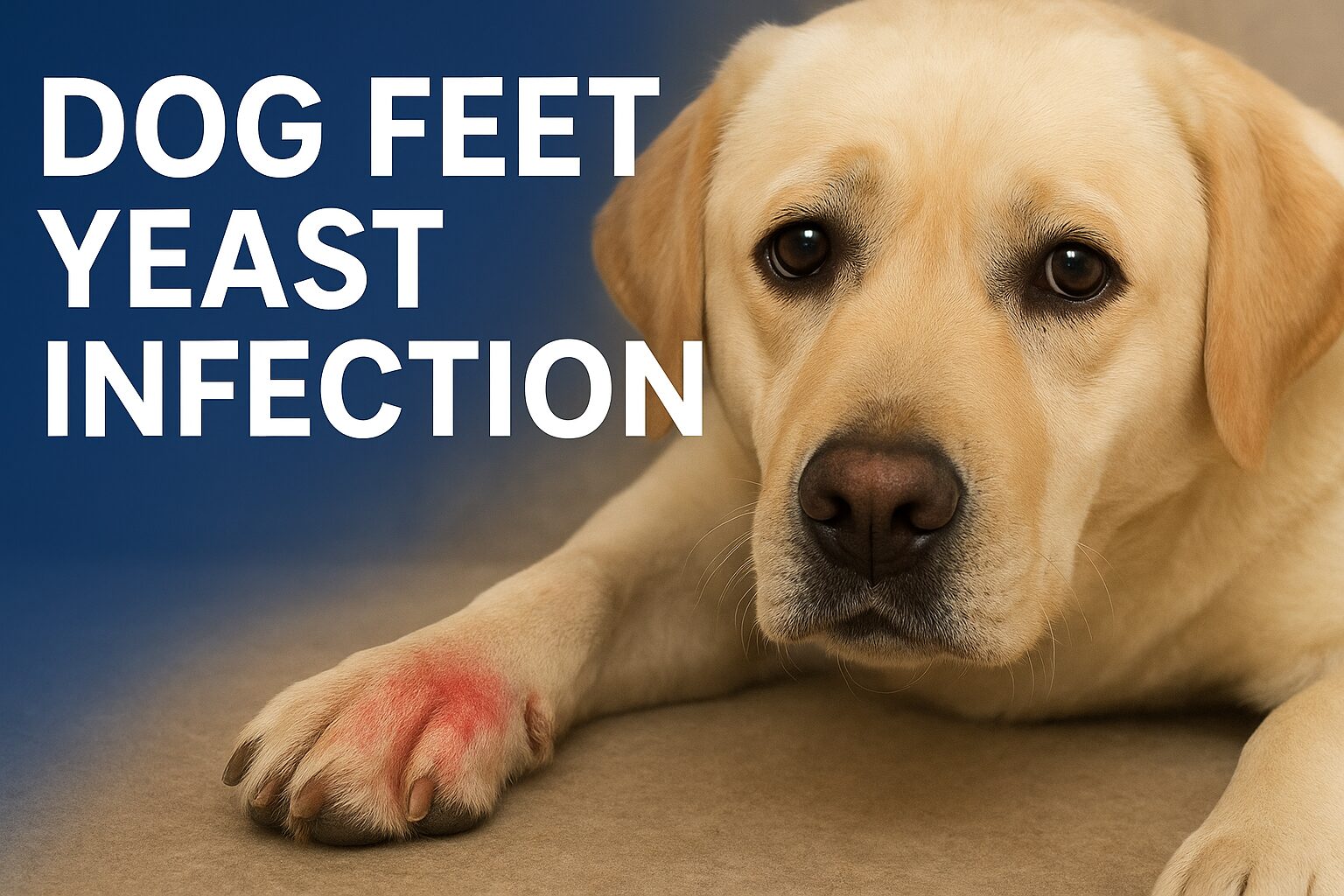A dog feet yeast infection is a common condition that faces owners of multiple pets but often ignore. This happens when a type of fungus called yeast naturally occurs on the dog skin between dog toes and claws and it grow excessively in warm areas. While a small amount of yeast does not create much problem but overgrowth can cause discomfort, irritation and secondary issues that affect your dog’s health & quality of life.
Causes of Dog Feet Yeast Infection
There are a lot of reasons why a dog feet yeast infection might develop:
Excessive Moisture : Most of the Dogs frequently lick their paws or walk on wet surfaces that may develop yeast due to excess dampness.
Allergies: It may occur due to some Food or environmental allergies that one of the most common reason to trigger inflammation that makes the skin more prone to yeast overgrowth.
Weak immune system: Due to weak immune, dogs that have some health conditions may struggle to regulate yeast levels on their skin.
Poor grooming: Poor grooming that caused by dirt and bacteria can create the perfect environment for infection without proper cleaning and drying.
Recognizing the Symptoms
Detecting dog feet yeast infection in early stage is key to managing dog feet yeast infection. You need to check some common signs include:
- Continuous chewing or licking paws
- Redness, swelling, or irritation between the toes
- A distinct musty or “corn chip” smell
- Brown, yellow, or white discharge from the paw
- Crusty or scaly skin around the paw pads
If untreated, this infection can be worse that will cause painful cracks in the skin and difficulty walking.
Diagnosis and Veterinary Care
If you suspect that your dog has a dog’s feet yeast infection, it is necessary to visit a veterinarian asap. A vet can conduct skin scraping, swab or subtle examination to confirm the presence of yeast. Identifying the root cause-like allergies or immune deficiencies-is also important for decidual management.
Treatment Options
Dog feet yeast infection Treatment depends on the severity of the infection and the identifying cause. Some common approaches include:
Topical treatments :That will include good Antifungal sprays, wipes, and medicated shampoos that can reduce yeast growth.
Oral medications: In more severe cases, commonly some good antifungal tablets may be prescribed.
Diet Changes: You Need to change your dog’s diet to a grain-free diet.
Regular cleaning: You need to Gently washing your dog paws every day to prevents yeast from thriving.
Additionally, your veterinarian may recommend some supplements such as omega-3 fatty acids, probiotics to improve your dog’s skin health and support immune function.
Preventing Recurrence
Managing a dog feet yeast infection doesn’t end with treatment; prevention plays an equally important role. Pet owners can reduce the risk of recurrence by:
- Keeping paws clean and dry after walks
- Avoiding excessive paw licking
- Maintaining balanced diet to support your dog’s skin and coat health
- Scheduling regular vet checkups to catch infections early
Dog feet yeast infection can be very uncomfortable and disappointing for both dog and their owners. Whenever you identify the symptom in early stages just go to your vet and take proper treatment.
Prevention is important – drought, clean, and free from allergies will lead to a long way to protect them from recurring infections.
Table of Contents
ToggleFAQ 1: What causes a dog feet yeast infection?
A dog feet yeast infection is usually caused by excess moisture, allergies, or an underlying health condition. When a dog’s paws stay damp or inflamed, yeast can overgrow and lead to irritation, redness, and discomfort.
FAQ 2: How can I treat a dog feet yeast infection at home?
For mild cases of a dog feet yeast infection, you can wash your dog paws with a gentle antifungal shampoo and keep them dry. However, it’s always best to consult a veterinarian for proper diagnosis and treatment, especially if symptoms persist or worsen.








